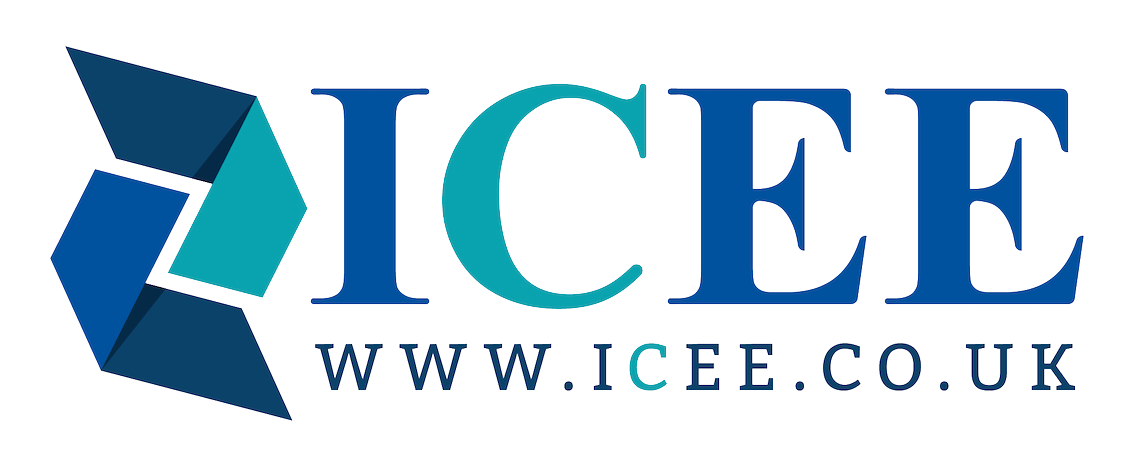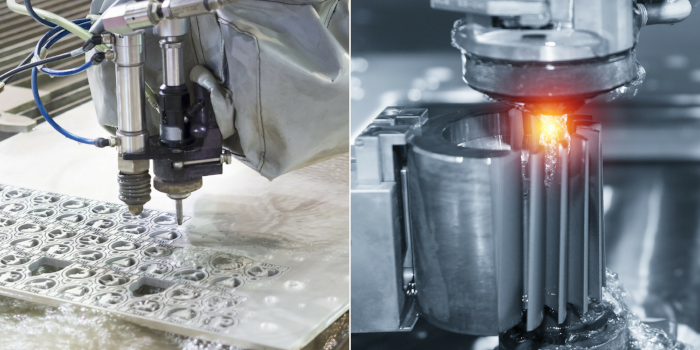What are the differences between waterjet cutting and EDM? Find out everything you need to know to make an informed decision on which is the best method for your needs in this blog.
EDM stands for Electrical Discharge Machining and is a technique used to machine electrically conductive materials, such as steel and titanium. Waterjets can be considered to be like a very fast EDM machine with less precision. This means that many of the jobs that an EDM would do can be done faster and cheaper on an abrasivejet, if the tolerances are not extreme.
The basic EDM process is quite simple, an electrical spark is created between an electrode and a workpiece, producing intense heat with temperatures reaching 8000 to 12000 degrees Celsius. The spark is very carefully controlled and localised, so that it only affects the surface of the material.
Wire EDM
EDM wire cutting uses a metallic wire of between 0.1 to 0.3 mm diameter, to cut a programme contour in a workpiece. Extrusion dies and blanking punches are very often machined by wire cutting. This process requires a starting hole or a start from the edge to begin the cutting process.
When it comes to EDM, depending on the accuracy and surface finish needed, a part will either be one cut or it will be skimmed.
One cut
The wire ideally passes through a solid part and drops a slug or scrap piece when it’s done. This will provide adequate accuracy for some jobs, but most of the time, skimming is necessary.
Skim cut
A skim cut is where the wire is passed back over the roughened surface again with a lower power setting and low pressure flush. Usually, there are just two skim passes, but there could be up to nine in some cases. A skim pass can remove as much as 0.002” of material or as little as 0.0001”.
Advantages of EDM:
- Tolerances of +/- 0.005 can be achieved
- Material hardness does not affect the process
- Cutting complex shapes and thin walled configurations without distortion
- No-contact and no-force process, making it well suited for delicate and fragile parts
- Leaves no burrs
Advantages of waterjet cutting over EDM:
- Faster
- Can work with more materials, unlike EDM that can only machine conductive materials
- Uniformity of material is not important
- Waterjets make their own pierce holes
- There is no HAZ
- Much more cost efficient, EDM is more expensive not only compared to waterjet, but to milling or turning as well
While back in the past, comparison between the two cutting methods would not have been possible, recent technological advances have made it possible for waterjet cutting to not only quickly catch up with EDM, but also become one of its strongest competitors.
One of the main factors allowing a waterjet to be able to compete for work with an EDM is its speed. Not only can abrasive waterjets slice the extraneous sections off quickly, but they also leave the chunks of material intact for other jobs. Waterjet is at least 10 times faster than a wire EDM.
However, a wire EDM is ten times more accurate than a waterjet. The best radius possible by a waterjet is about 0.015” (0.358 mm), but an EDM can produce radii of less than 0.001” (0.03 mm). Therefore, parts cost more to produce on an EDM than on a waterjet, because it’s much slower, which also means that the timescale of your projects would be increased.
For those cases when you don’t need the ultimate level of accuracy, waterjet would be the preferred option. While the method is cheaper and faster, it still delivers a very high edge quality, finish and accuracy.
To find out everything you need to know about waterjet cutting in order to determine whether it will meet your specific needs and requirements, download our free eBook ‘An engineer’s guide to waterjet cutting’.

